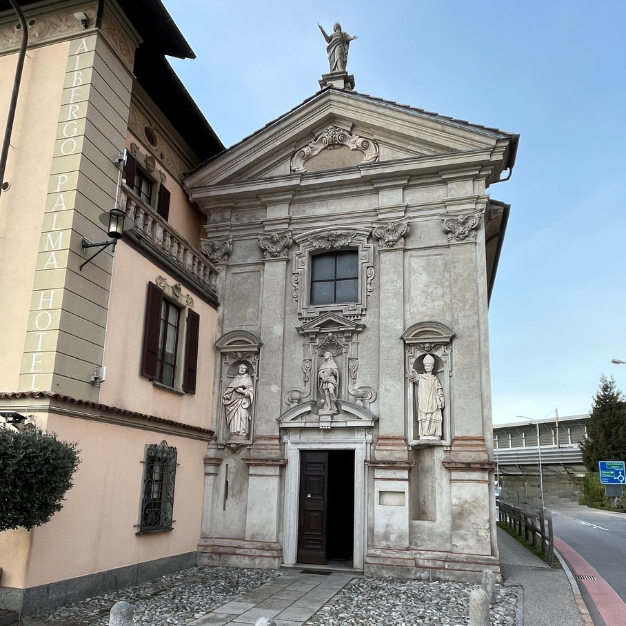2. The Oratory of San Rocco
The Oratory was built in the 1630s on the site of a medieval chapel whose few pictorial remains are visible on the façade.
History
The Oratory was built in the 1630s on the site of a medieval chapel whose few pictorial remains are visible on the façade. Its dedication to San Rocco leads us to believe that it was built in gratitude, or to ward off danger, during the time of the notorious plague of 1630 which gravely hit the North of Italy and Ticino.
The letters “C.T.” engraved in the architrave above the main entrance door, suggest the intervention of the architect and sculptor Costante Tencalla (ca. 1590-1646), who had already been working in Rome with Carlo Maderno and in Poland with his uncle Matteo Castelli from Melide. Its most distinctive element being the façade, which reflects the directives issued by San Carlo Borromeo, the bishop of Milan, who believed that the façade should convey the initial message to the faithful who were about to cross the threshold of the church.
The interior consists of a single central nave terminating with the choir and is marked off by a balustrade. The high altar hosts an altarpiece surrounded by a stuccoed frame.
Two altars, one dedicated to St. Francis of Assisi, and the other to St. Anthony of Padua were carved out on lateral walls. Two notable statues located in consecrated niches, and made by Arogno’s sculptor Giovanni Antonio Colomba, represent St. Michael and St. Sebastian


